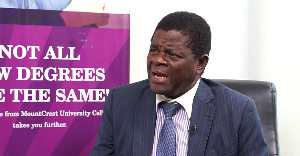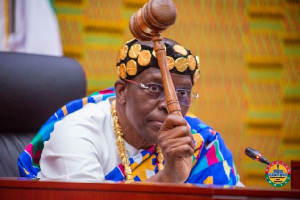Business News of Monday, 10 April 2017
Source: thefinderonline.com
Government in GHC200m record-breaking fertiliser subsidies
Government has allocated over GH¢200 million for fertiliser subsidies for the 2017 farming season.
This is the biggest subsidy allocation since the programme was instituted in 2008. Until this year, subsidy of GH¢176,746,000 provided in 2013 was the biggest.
This year’s allocation of over GH¢200 million represents 50% reduction in the prices of fertilisers as compared to 26% reduction last year which cost the nation some GH¢138million.
3.6million bags of fertilizers
The subsidy for 2017 will cover 180,000 metric tonnes, the equivalent of 3.6million bags of fertilisers.
This, according to government, is to motivate farmers to increase crop yields and also pave way for more exports.
Announcing the subsidies, Food and Agriculture Minister, Dr. Owusu Afriyie Akoto, said the price of compound fertiliser (NPK) which was GHC85 in 2016, is now selling at GHC57.50.
He revealed that the price of Urea fertilizer is currently selling at GH¢47.50 instead of the previous price of GHC80.
“Organic fertilizer will be GHC15 flat. What it means is that the GH¢57 represents 50% reduction as the subsidy amounts to 50%. The cost to the government is GH¢115 per bag of 50kg for NPK, which is the most common form of fertilizer. A farmer is paying only half of it, which amounts to GHC57.50.”
Dr. Afriyie Akoto said the move is part of measures to enhance productivity in the agric sector.
“In terms of comparison with last year, we hope that this huge reduction in price for the farmer would encourage more farmers to apply fertilizers so that we can raise the productivity on the farms this year,” he added.
He expressed hope that the reduction will encourage more farmers to apply fertilisers in order to raise productivity.
“In terms of comparison with last year, we hope that this huge reduction in price for the farmer would encourage more farmers to apply fertilisers so that we can raise the productivity on the farms this year,” he said.
Fertiliser subsidy programme instituted in 2008
The country-wide fertiliser subsidy programme instituted in 2008 is considered one of the unique cases of public-private partnership in which the government consulted heavily with fertiliser importers in the design stage and relied exclusively on the existing private distribution system to deliver fertiliser to farmers as part of efforts to boost production output.
Increasing crop productivity It was established to help farmers increase their rate of fertiliser application as a means of increasing crop productivity as well as increase the country’s fertiliser application.
The fertiliser subsidy programme was re-launched in March 2015, that notwithstanding it became dormant due to government’s inability to pay suppliers.
A report by SEND Ghana indicated that government failed to meet its fertiliser subsidy targets by 50 percent in 2015.
According to the report, government in 2015 projected to import 180,000mt of subsidised fertiliser; however, as at December, government was able to import only 90,000mt of fertiliser, representing half the target.
Except in 2014, government has solely provided funding for implementation of the subsidy programme since inception.
GHC345m spent on fertilizers subsidised from 2008 to 2013
According to the report, from 2008 to 2013 government subsidised 724,055 mt of fertiliser at a cost of GHC345,244,000.
Until this year, the biggest allocation subsidy of GHC176,746,000 was provided in 2013.
317% increase in quantity of subsidised fertiliser from 2008 to 2013 It further depicts that the quantity of subsidised fertiliser (except for 2012) rose steadily by 317 percent from 43,176mt in 2008 to 180,000mt in 2013.
While the quantity increased, the northern Ghana percentage of price subsidy reduced from 50 percent in 2008 to 21 percent in 2013 and 2015.
The reduction of the subsidy has resulted in increases of the subsidised fertiliser’s price.
For instance, the price of Compound fertiliser was GHC22 per 50kg bag in 2008, but increased to GHC89 per 50kg bag by 2015, representing a 295 percent rise.
The report stated that government's inability to fully finance the fertiliser subsidy programme in 2014 contributed to the failure in meeting yield targets for maize and rice in nearly all the six districts covered in the three regions of the northern part of Ghana during the study.
As a result, many farmers were left to buy fertiliser at commercial rates in the market place.
















